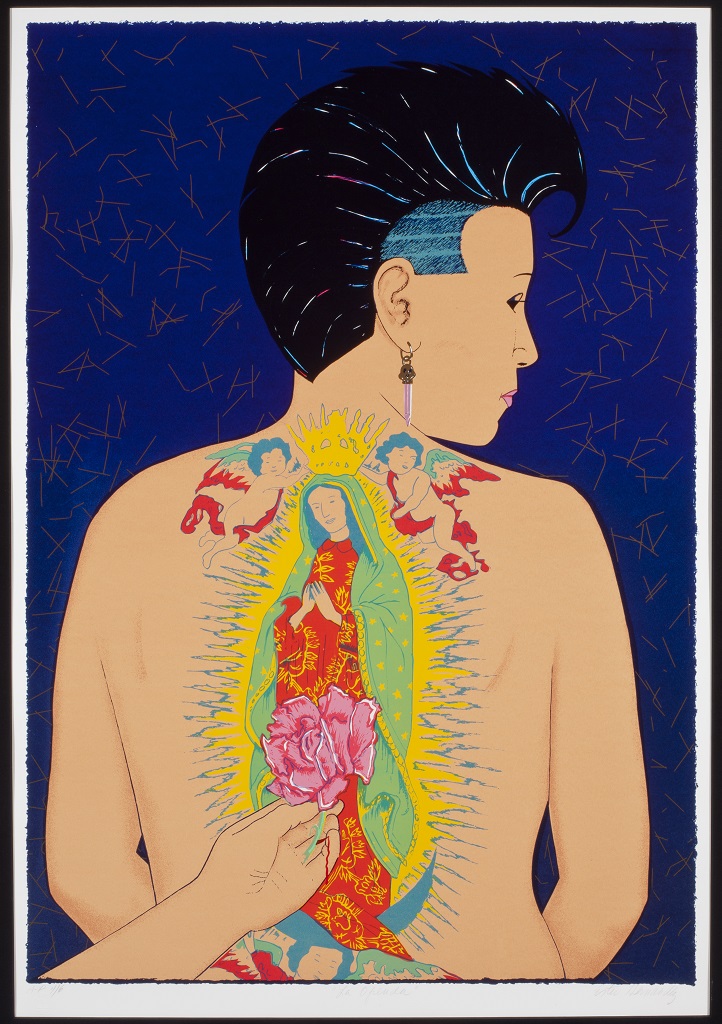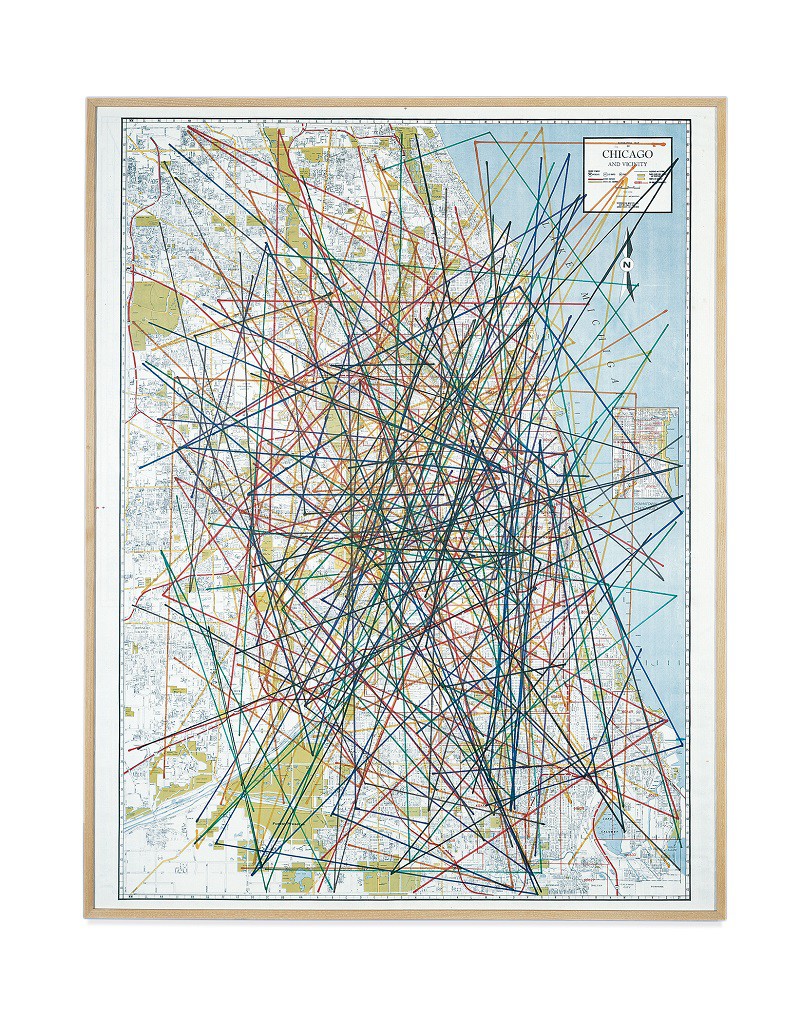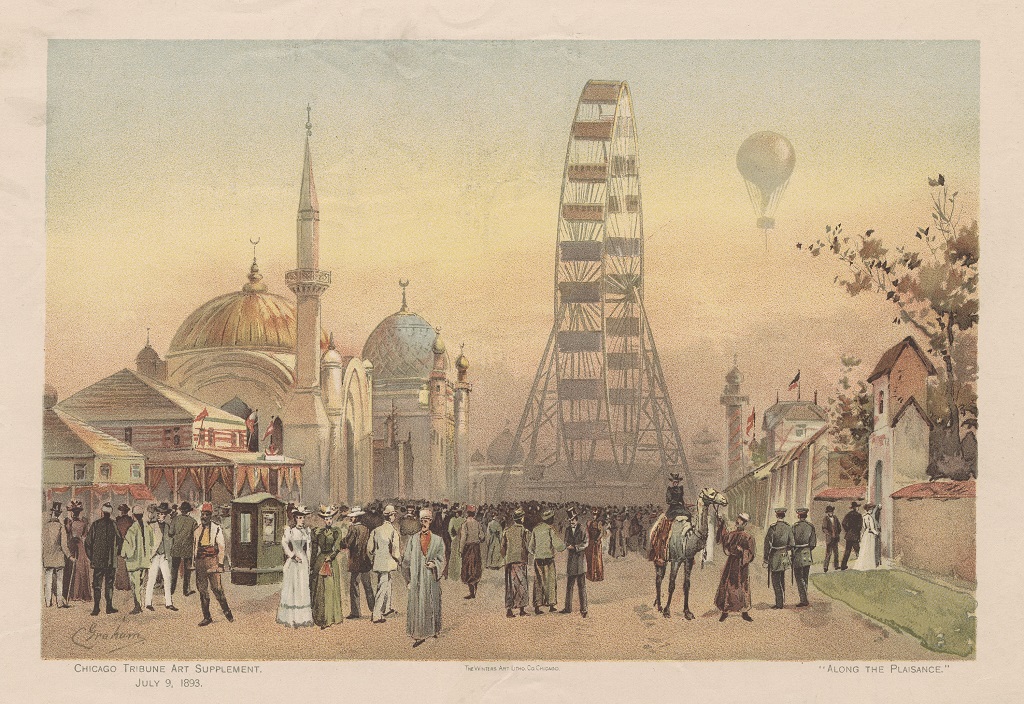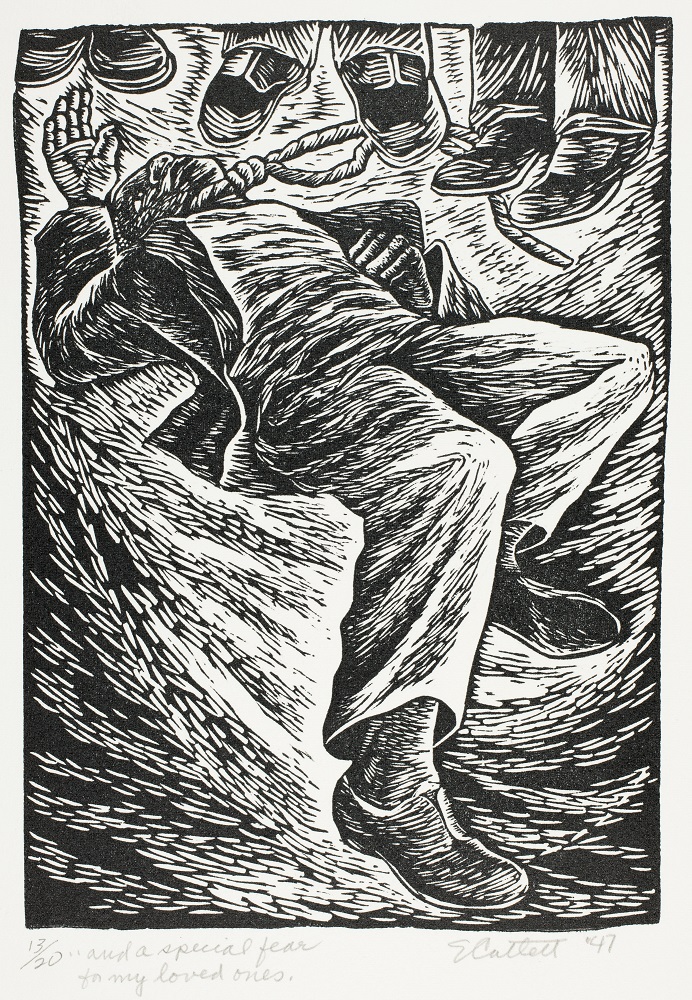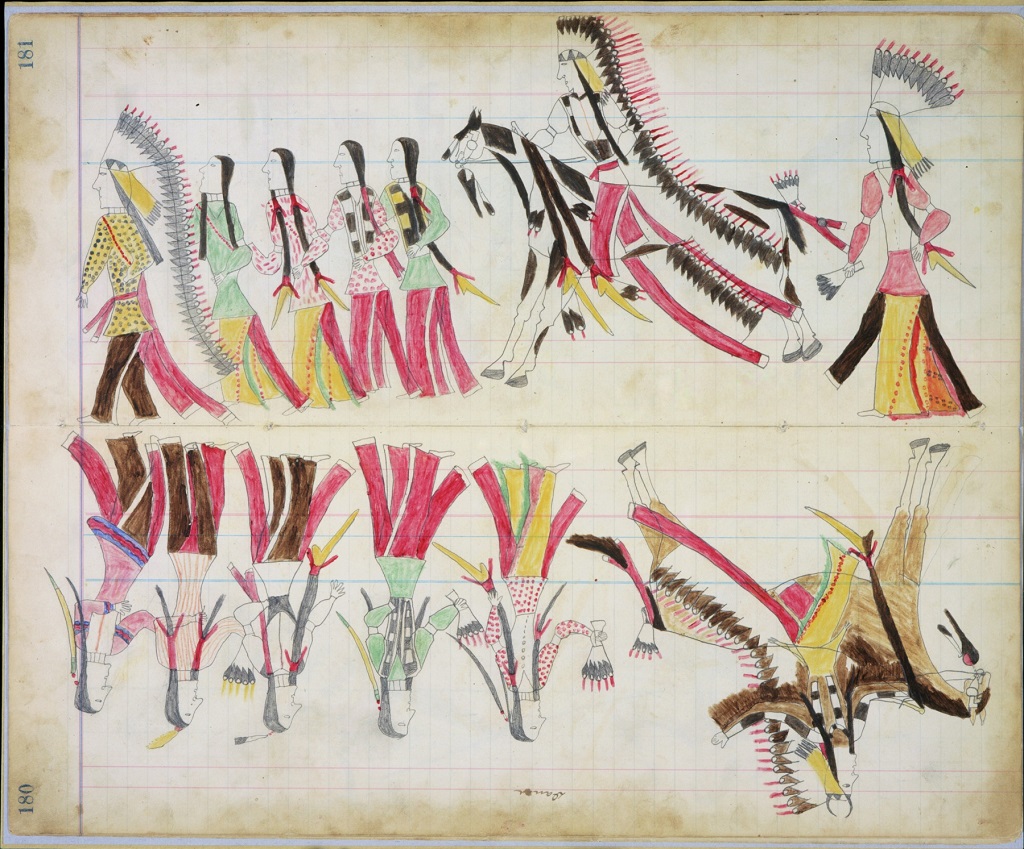Authors:
National Museum of Mexican Art Education Staff
Summary:
This lesson explores how the symbols in a work of art can help express the identity of an individual or a cultural group. Students discuss popular cultural symbols and identify symbols that have personal importance for them. They look closely at Ester Hernández’s serigraph print The Offering/La Ofrenda and deepen their analysis by reading and discussing informational texts about the artwork. As a culminating activity, students create self-portrait collages, incorporating artistic elements that help express their own identities.
Lesson Overview
Grade Levels: 7–8
Time Needed: 2 class periods (40–50 minutes each)
Background Needed
There is no specific background needed for this lesson.
Essential Questions
- How can artists use the elements of art to communicate emotion and meaning?
- How do artists use traditional cultural symbols to convey meaning?
- How do artists explore issues of identity within their work?
Enduring Understandings
- Symbols help shape and communicate the beliefs, values, and knowledge of a culture or an individual.
- Understanding how identities are formed helps promote understanding and respect for different perspectives.
Objectives
- Students will read closely to determine what a text says explicitly and to make logical inferences from it.
- Students will cite specific textual evidence when writing and speaking to support conclusions drawn from the text.
- Students will analyze how two or more texts address similar themes and topics in order to build knowledge.
- Students will write informative/explanatory texts to examine and convey complex ideas and information clearly and accurately through the effective selection, organization, and analysis of content.
- Students will prepare for and participate effectively in a range of conversations and collaborations with diverse partners, building on others’ ideas and expressing their own clearly and persuasively.
Key Vocabulary
- identity
- subject
- symbol
- Virgin of Guadalupe
Standards Connections
Common Core State Standards
Anchor Standards in Reading:
http://www.corestandards.org/ELA-Literacy/CCRA/R/
- CCSS-ELA Reading Anchor Standard 1: CCSS.ELA-LITERACY.CCRA.R.1
- CCSS-ELA Reading Anchor Standard 9: ELA-LITERACY.CCRA.R.9
Anchor Standards in Writing:
http://www.corestandards.org/ELA-Literacy/CCRA/W/
- CCSS-ELA Writing Anchor Standard 2: CCSS.ELA-LITERACY.CCRA.W.2
Anchor Standards in Speaking and Listening:
http://www.corestandards.org/ELA-Literacy/CCRA/SL/
- CCSS-ELA Speaking and Listening Anchor Standard 1: CCSS.ELA-LITERACY.CCRA.SL.1
Materials
In the Classroom
- items or images that represent popular cultural symbols: a valentine heart, a peace sign, a U.S. flag, the Statue of Liberty, etc.
- writing journals or writing paper
- a computer with Internet access
- an interactive whiteboard or another classroom projector
- for the collage project: paper, pencils, scissors, glue; crayons, markers, or pastels; additional collage objects, such as pictures from magazines, catalogs, and newspapers
Works of Art
- Ester Hernández, The Offering/La Ofrenda
Other Resources
- Close Looking Guide: The Offering/La Ofrenda
- Art Study: The Offering/La Ofrenda, Read to Build Knowledge
- “The Virgin of Guadalupe/La Virgen de Guadalupe”
- Graphic Organizer: Interpreting an Artwork
Lesson Steps
- Have students explore the use and meaning of symbols: Display the symbols you have gathered to students and ask them to identify the meanings that are associated with each of them. Discuss the values or beliefs that each symbol represents. Explain to students that since the dawn of civilization, humans have used symbols to help understand and communicate who they are and what values and beliefs are important to them. Symbols reflect important aspects of cultural knowledge and beliefs; as a result, different cultures look to different symbols to help shape and communicate what is important to them. Then have students freewrite for several minutes on the following questions:
- What symbols are important to you and your family?
- Why are these symbols important?
- What beliefs, values, interests, and/or traditions do these symbols communicate?
Have students generate a list of these symbols that remains visible during the course of the lesson. With a partner or as a full class, students can briefly share their symbols with each other and describe the meaning these symbols hold for them.
- Explore identity and symbolism through a close reading of an artwork: Project or distribute copies of Ester Hernandez’s The Offering/La Ofrenda. Explain that this image is a serigraph print, which is a type of screen printing. To make a serigraph print, the artist uses a woven mesh screen to print the individual colors in the image.
Divide students into groups of three or four. Give each student a copy of the Close Looking Guide: The Offering/La Ofrenda. Explain that students will conduct a visual literacy exploration and will discuss how an artist explores the topic of identity through her art. Have students begin by spending one minute observing the image silently. Then have them discuss each question in their groups before recording their responses on the Close Looking Guide. Afterward, have students share and discuss their responses with the whole class.
Close Looking Questions:
- What do you see in this work of art? List everything you see, paying careful attention to where these details are located within the image.
- What familiar images/symbols do you see represented in this print? Identify them.
- What do you think the work of art is about? What elements of the artwork make you think so?
- How does this artwork reveal what may be important to the artist or the cultural group she identifies with? Cite evidence from the artwork.
- Conduct a close reading of two informational texts: Explain that in order to interpret an artist’s meaning, sometimes we have to explore background information about the artist and about the images, symbols, and techniques that she uses within her work. Ask students: What additional information would help you interpret this image? Have them generate a short list of additional pieces of information that might help them interpret The Offering/La Ofrenda. This list might include background on the Virgin of Guadalupe, where Hernández is from, her cultural heritage, how she views her own identity, etc.
Divide the class into two groups. Distribute copies of the Art Study: The Offering/La Ofrenda, Read to Build Knowledge to each student in one group. Distribute copies of “The Virgin of Guadalupe/La Virgen de Guadalupe” to each student in the other group. Give every student a copy of the Graphic Organizer: Interpreting an Artwork. Then have students pair up with another student in their group and conduct a close reading of the assigned text. As they read, students should look for key ideas within the text that help them better understand the artwork. They should record these ideas in the appropriate column of the Graphic Organizer: Interpreting an Artwork.
After students have read their assigned texts, have them partner with a classmate who read the other text. Explain that each partner will have a few minutes to share at least three key pieces of information from the text he or she read. After both students have shared, they should identify one new idea or interpretation of The Offering/La Ofrenda that the texts helped reveal. They should record this new insight in the third column of the Graphic Organizer: Interpreting an Artwork, and provide evidence from one or both texts that supports their idea.
- Delve into a deeper exploration of the artwork: Use questions like the following to guide a class discussion of The Offering/La Ofrenda:
- Has your interpretation of Hernández’s piece changed? In what way?
- What sentences or elements of the texts changed your interpretation?
- What discussion points from talking with your partner changed your interpretation?
- What ideas from the two texts either confirmed or altered the way you now interpret the image?
- What circumstances or events in the artist’s life might be reflected within this print?
- What symbols did Hernández include within her piece? What do they reveal about the identity of the subject? Do you think this portrait reveals anything about the artist? Why or why not?
- What evidence do you have to support your conclusions?
- Why do you think this painting is called The Offering/La Ofrenda? Do the texts help you answer this question?
- Have students freewrite about identity: Tell students to select an event that they believe has shaped their identity and/or their opportunities. Have them freewrite about the event, including as many details as they can about the event itself. To help them recall more vivid details, tell them to imagine that they are an outsider observing that event. What images, sounds, and smells would they notice first? Second?
- Have students create self-portrait collages: Tell students to look at what they wrote in the previous step. Have them circle the words that best represent their personal characteristics, interests, and what is important to them. Explain that the items they have circled can be considered symbols: actions, objects, events, etc., that express or represent who they are.
Have students draw and color images of the symbols they listed on a separate piece of paper. They should cut them out and put them to the side. On a second sheet of paper, students should draw a background for their self-portrait using a pencil. Once the background is completed, they should draw their portrait in the center of the paper. This can also be in pencil. Next, students should arrange their cut-out symbols around the self-portrait, gluing them to the paper. They should add color and any additional cut-outs to complete their self-portrait collages.
- Have students write artist statements: Ask students to write a brief statement that explains the significance of their self-portrait and how it reflects their identity. The statement should mention specific decisions they made about their use of symbols, color, line, shape, texture, etc.
- Discuss the self-portrait collages and identity: Invite a few students to present their collages to the class and explain the meaning of the symbols. Use this as the basis for a class discussion about identity. Point out that it enriches us to understand that people develop unique identities based on their values, beliefs, and life experiences. It is important to respect the diverse identities of individuals and groups.
Additional Resources
Art in Print. “Ester Hernández: Sun Mad.” Accessed November 14, 2014. http://artinprint.org/index.php/articles/article/ester_hernandez_sun_mad
Ester Hernández. “Official website and shop of Ester Hernández.” Accessed November 14, 2014. http://www.esterhernandez.com/
Smithsonian American Art Museum. “Ester Hernández.” Accessed November 14, 2014. http://americanart.si.edu/collections/search/artist/?id=5984

